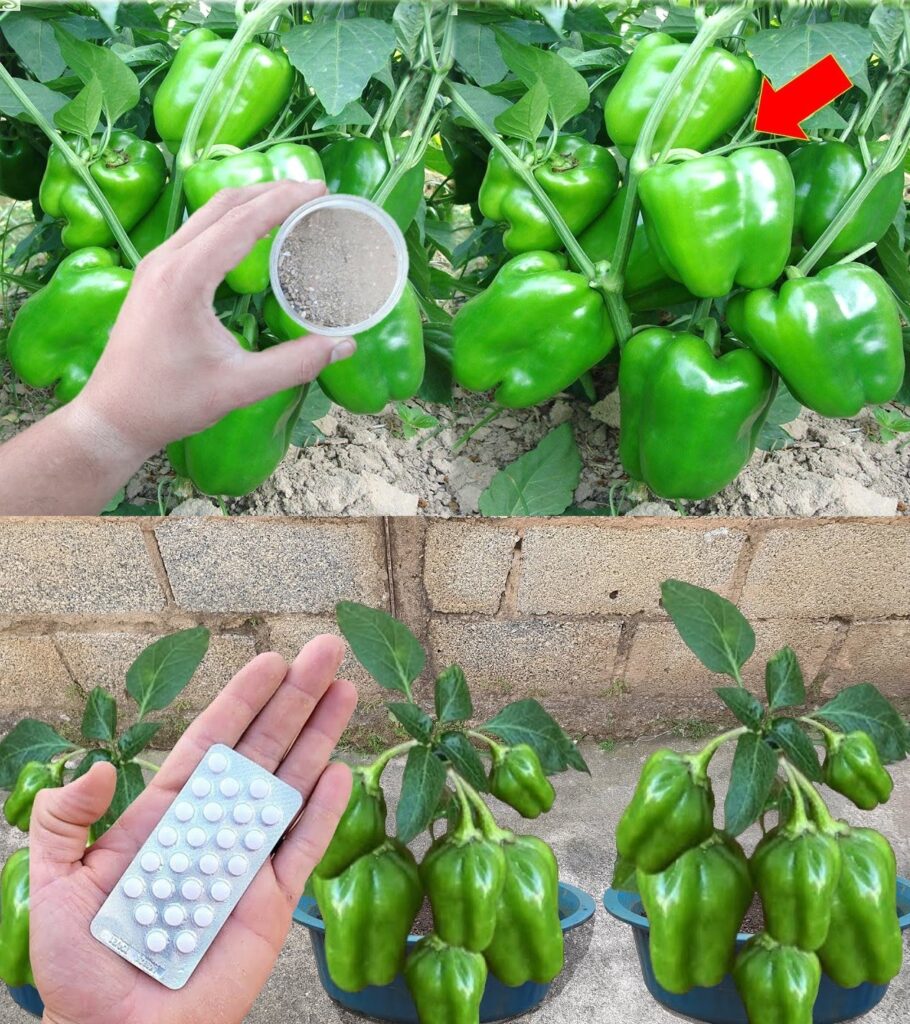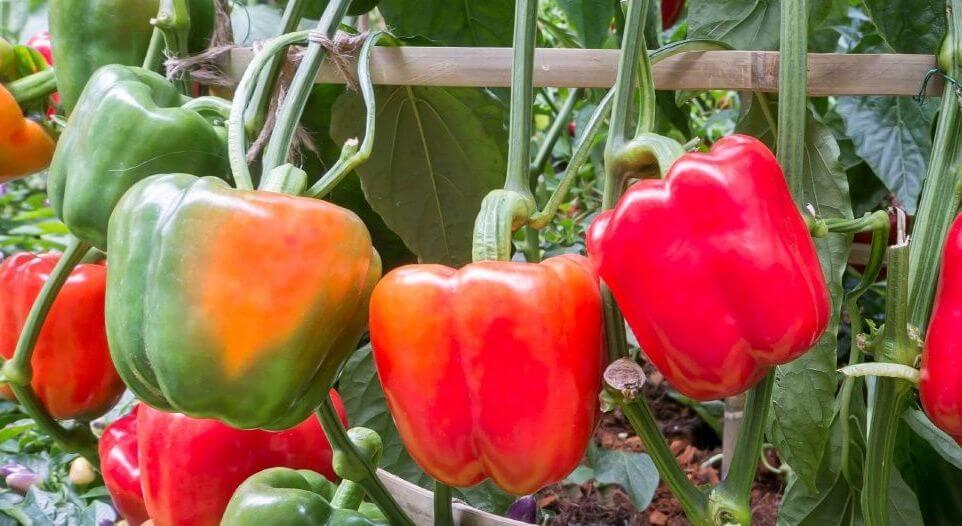
Peppers can also be planted near cucumbers, carrots, eggplants and onions. If you have problems with beetles, plant geraniums or petunias near peppers.
Basil grows well near peppers and keeps insects away. Parsley attracts pollinators and certain types of wasps that repel aphids.
Avoid planting broccoli, cabbage, or mustard plants near your peppers. You should also avoid planting peppers near fennel or green beans.

6) Supports
You don’t need to stake the peppers, but it can keep them off the ground. If your plants droop, they are more susceptible to pests and soil microbes.
7) Make a good mulch
Peppers like to stay warm and have well-drained soil, so mulching the plants is essential. A dark mulch absorbs more heat from the sun to keep the soil warm.
Peppers also love cut grass. Lawn mulch helps prevent weeds from entering your garden quickly and damaging plant roots.
8) Proper irrigation
Peppers need a lot of water, about 2-5 cm of water per week. Observe the amount of water obtained through rain with a rain gauge and top up with water if necessary.
If you live in a warm climate or on very hot days, you may need to water twice a day. If your peppers become too dry, they can become bitter.
However, overwatering can damage the roots or rot the flowers.
9) Pruning pepper plants
Remove the first flowers from each plant. This forces the plant to use its energy to grow the entire plant and not just one fruit.
This can help the plant produce more peppers later and you will get a better harvest.
10) Fertilizer
If you add fertilizer to your garden, wait until the peppers begin to form. Peppers don’t like a lot of nitrogen, so look for a fertilizer that doesn’t contain a lot of nitrogen. Too much nitrogen can cause the plant to produce more leaves instead of flowers and peppers.
11) Pests
Flea beetles and aphids love peppers. If you notice these pests on your peppers, use an organic insecticide that is safe for vegetable plants.
12) Harvest peppers
Green peppers are ready to harvest approximately 60 to 90 days after planting. Harvest peppers when they are the size and color you want. First they will be green and then they will turn red. The longer the pepper remains on the plant, the sweeter it will be and the more vitamin C it will contain.
To avoid damaging the plant, use a knife to cut the fruit, leaving about 2 cm of the pepper stem on the plant.
With these tips, you’ll enjoy a bountiful harvest of peppers this year. Peppers are fairly easy to grow, but these simple tips will help keep your plants healthy and increase their yield.